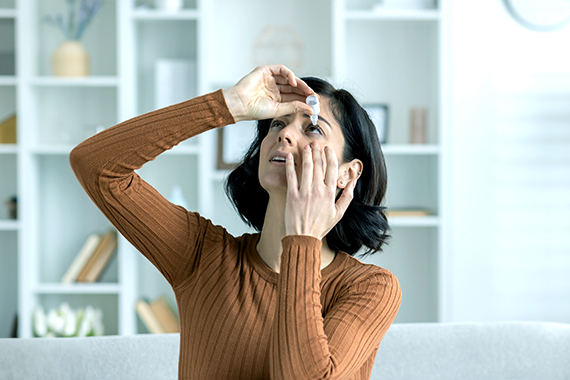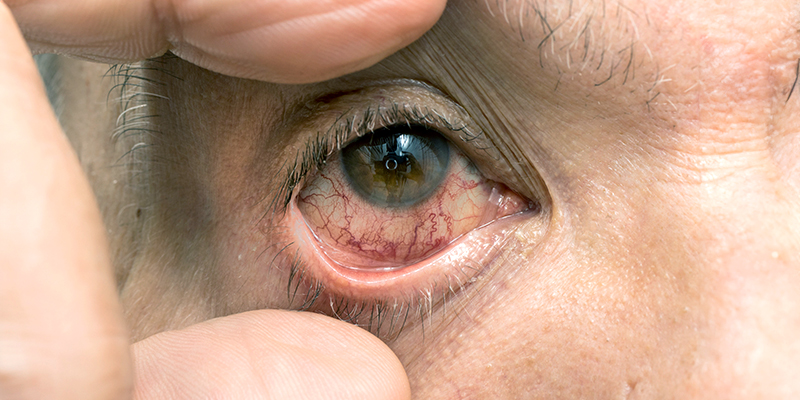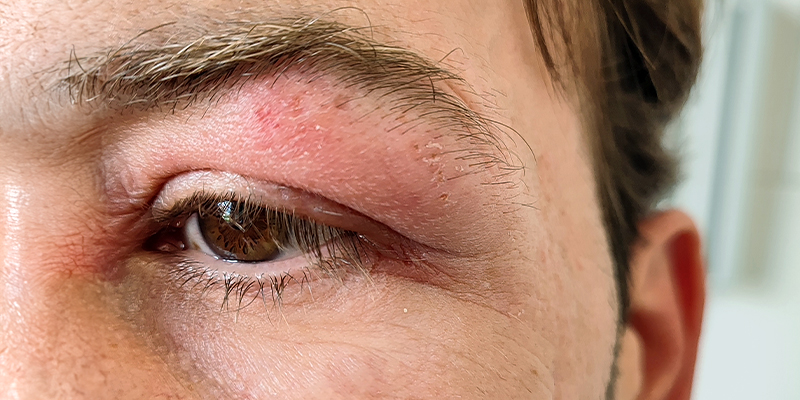Dry Eye Disease, also known as Keratoconjunctivitis Sicca, is a chronic condition where your eyes do not produce enough tears, or the quality of tears is poor, leading to inflammation and discomfort. Tears are essential for maintaining the health of the front surface of the eye and ensuring clear vision. When tear production is compromised, it can result in symptoms ranging from mild irritation to significant inflammation, potentially affecting the quality of life.

Book Appointment Download Brochure
A feeling of dryness, grittiness, or a sandy sensation in the eyes. A feeling of dryness, grittiness, or a sandy sensation in the eyes.
Irritated or inflamed eyes that may appear red.
A burning sensation in the eyes, often accompanied by a stinging feeling.
Fluctuating vision, particularly during tasks requiring prolonged focus, such as reading or using a computer.
Increased sensitivity to light, making it uncomfortable to be in bright environments.
Paradoxically, dry eyes can trigger excessive tearing as a reflex response, although these tears often lack the necessary lubricating properties.
If you experience persistent eye dryness or any of the symptoms mentioned above, it is essential to consult an eye care professional. Prolonged dry eye disease symptoms can lead to complications such as eye infections, corneal damage, or severe discomfort that impacts daily activities. Early diagnosis and appropriate treatment can help manage symptoms effectively and prevent further complications.
Dry Eye Disease can be attributed to several factors:
The natural aging process reduces tear production, making individuals over 50 more susceptible.
Women, especially those undergoing hormonal changes due to pregnancy, menopause, or the use of birth control pills, are more likely to develop dry eyes.
Certain medications, including antihistamines, decongestants, blood pressure medications, and antidepressants, can reduce tear production.
Exposure to dry, windy, or smoky environments can exacerbate symptoms.
Extended use of computers, smartphones, and other digital devices reduces blinking, leading to increased tear evaporation.
Autoimmune diseases such as Sjögren's syndrome, rheumatoid arthritis, and lupus can cause chronic dry eye. Diabetes and thyroid disorders are also associated with dry eye disease.
Dry Eye Disease can be classified into two primary types

This occurs when the lacrimal glands fail to produce enough tears to maintain a healthy eye surface.

This type is caused by rapid tear evaporation due to inflammation of the Meibomian glands, which produce the oily layer of the tear film.
Several factors can increase the risk of developing Dry Eye Disease
Individuals over 50 years are at higher risk.
Women, especially those undergoing hormonal changes.
Prolonged use of contact lenses can disrupt the tear film.
Living in dry, windy, or high-altitude areas can increase the risk.
Autoimmune diseases, diabetes, and thyroid disorders can elevate the risk.
Procedures like LASIK can temporarily reduce tear production.
Preventing dry eyes involves adopting certain habits and lifestyle changes:
Especially when using digital devices, make a conscious effort to blink often to maintain tear film stability.
Adding moisture to the air, especially in dry climates or during winter, can help reduce tear evaporation.
Wear sunglasses or goggles in windy or smoky environments to protect your eyes from irritants.
Drink plenty of water to maintain overall hydration, which supports tear production.
Follow the 20-20-20 rule when using screens—every 20 minutes, look at something 20 feet away for at least 20 seconds.
Smoking can exacerbate dry eye symptoms by irritating the eyes and reducing tear production.
Dry Eye Disease or Eye Dryness is a common condition that can significantly impact daily life if left untreated. Recognizing the symptoms and understanding the causes and risk factors are essential steps in managing and preventing this condition. If you experience persistent eye dryness or discomfort, consult an eye care professional to explore the best treatment options and protect your eye health.
While Shree Ramkrishna Netralaya is your top choice for eye care in Mumbai, you may also consider our other reputable clinics and hospitals near you.
Address:
201 & 202 Elmer #Plot #563, Central Avenue, Corner of, 11th Rd, Chembur, 400071
Phone: 082917 14838
Timing: Mon-Sat- 10 a.m. To 8 p.m.
Address:
Near Risk Care Hospital, Near Makhamali Talao, LBS Marg, Thane, W, Mumbai, Maharashtra 400601
Phone: 02225441139
Timing: Mon-Sat- 11 a.m. To 8 p.m.